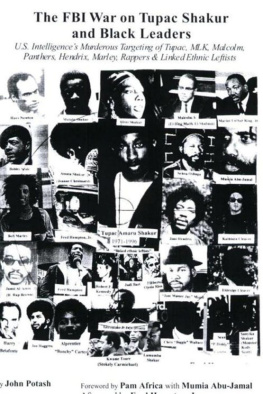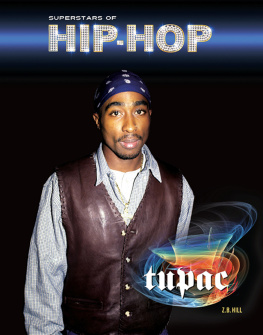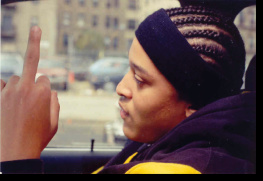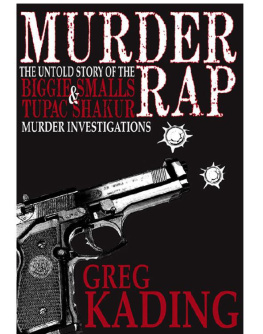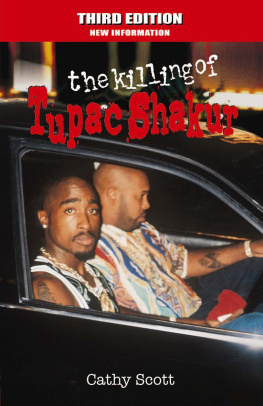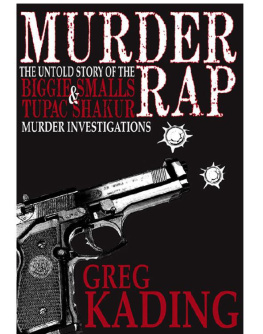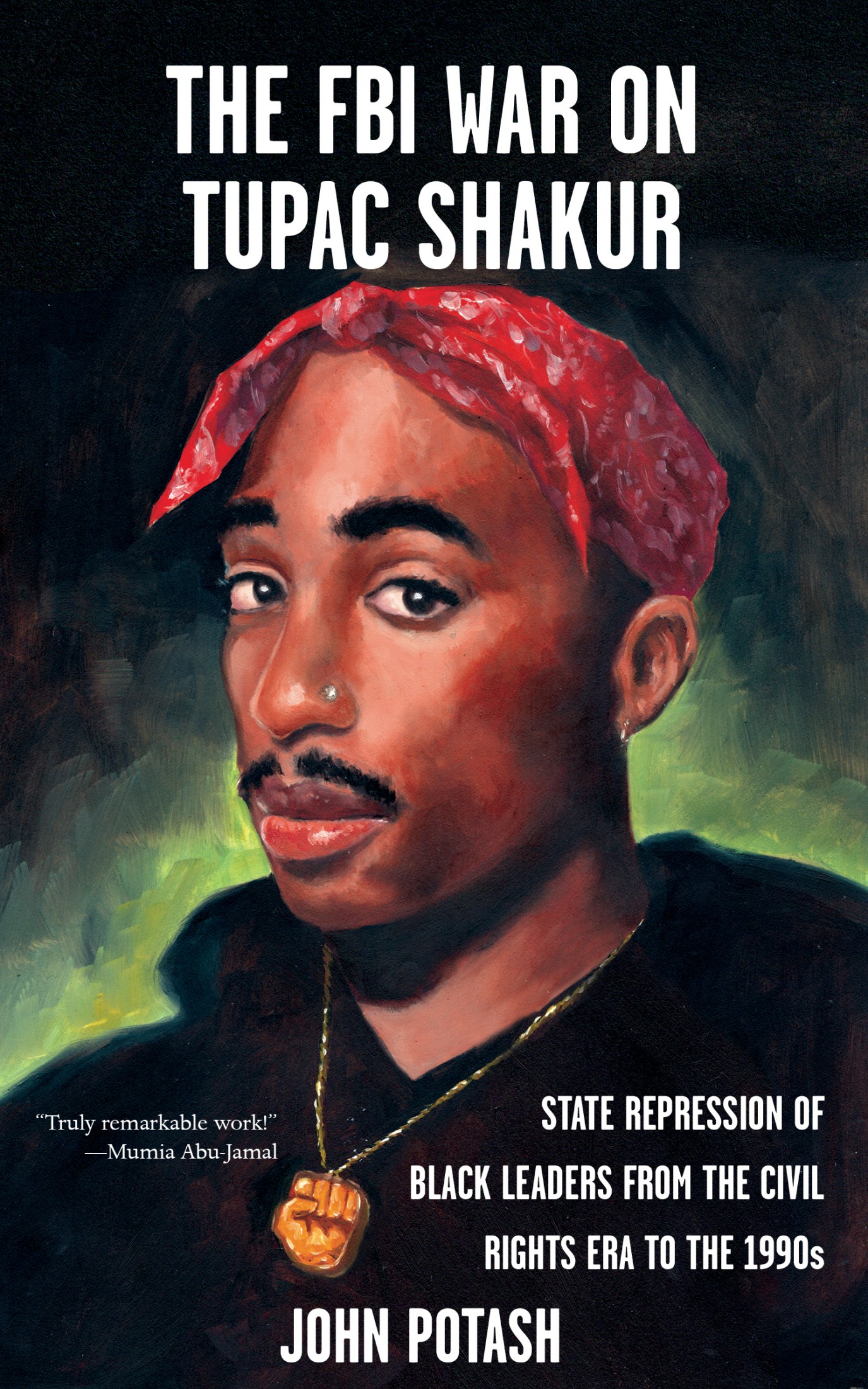THE FBI WAR ON TUPAC SHAKUR
State repression of Black Leaders from the Civil Rights Era to the 1990s
2007, 2021 John Potash
This edition Microcosm Publishing 2021
eBook ISBN 9781648410529
This is Microcosm #538
Edited by Sarah Koch
For a catalog, write or visit:
Microcosm Publishing
2752 N Williams Ave.
Portland, OR 97227
microcosm.pub/FBI-Tupac
Did you know that you can buy our books directly from us at sliding scale rates? Support a small, independent publisher and pay less than Amazons price at www.Microcosm.Pub
Microcosm Publishing is Portlands most diversified publishing house and distributor with a focus on the colorful, authentic, and empowering. Our books and zines have put your power in your hands since 1996, equipping readers to make positive changes in their lives and in the world around them. Microcosm emphasizes skill-building, showing hidden histories, and fostering creativity through challenging conventional publishing wisdom with books and bookettes about DIY skills, food, bicycling, gender, self-care, and social justice. What was once a distro and record label was started by Joe Biel in his bedroom and has become among the oldest independent publishing houses in Portland, OR. We are a politically moderate, centrist publisher in a world that has inched to the right for the past 80 years.
Global labor conditions are bad, and our roots in industrial Cleveland in the 70s and 80s made us appreciate the need to treat workers right. Therefore, our books are MADE IN THE USA.
Contents
introduction to the second edition
Introduction to the First Edition
Civil Rights, Black Liberation, and the FBI
Malcolm X
Martin Luther King
The Civil Rights movement radicalizes into the
Black Panther Party
u.S. Intelligence Begins Murderous Targeting &
Harassment of Panthers
Murders in LA and the New York 21
The murder of fred hampton and attempt on geronimo Pratt
FBI RAIDS and the manufacture of the East/West
Panther Feud in NYC
The Panther 21 Tragicomic Trial
Labelled Terrorists
CIA-Linked Dealers hook afeni and Newton
Tupac, huey Newton, and the Anniversary Murders
FBI Orchestrates Armed Attacks
LA Riots and Fred Hampton Jr
The Code of Thug Life
Tupacs FBI File, republican attacks, harassment Arrests, & Specious lawsuits
Atlanta police shoot at tupac
cover-ups and links to tupacs nyc Shooting
CIA & Time Warners Grip on the music industry
Penal Coercion and Fbi COINTELPRO tactics set up
east/West Rap Feud
Death Row Signs Tupac
death row Police and suge knight work to end gang truce
Murder in Mob Land
Police Cover-ups and the reignition of the bloods vs Crips war
Threat-timing Tactics and a suspect killed
FBI & ATF Watch again As death row cops are nailed in biggies murder
media fuels The gang war and biggies family fights for justice
death row & feds target afeni, snoop dogg, and dre
FBI and New Yorks national police COINTELPRO targeting of rappers
targets: Spearhead, Rage against the machine, wu tang, dead prez, the coup
NYPD vs hip-hop summit rap moguls russell simmons and sean puffy combs
the nypd vs. AcTivist latino gangs
Epilogue
introduction to the second edition
I started researching this subject regarding the FBI targeting of Tupacs Black Panther family in 1991, and specifically started researching Tupac in December of 1994. I first published initial conclusions in a local magazine in the Spring of 1995, before Tupacs death.
In 1999, I published a more comprehensive article in the award-winning Covert Action Quarterly , started by CIA agent whistleblower Phil Agee. Tupacs political mentors, such as his former Black Panther business manager, Watani Tyehimba, and his national lawyer, Chokwe Lumumba, urged me to turn that article into this book.
Over twelve years of investigation revealed the murderous targeting of not only Tupac Shakur but other prominent members of the Civil Rights Movement and Black musicians. This investigation included primary source information along with my personal interviews with hundreds of eyewitnesses to these events, including the five police-linked attempts to murder Tupac Shakur before his death. Thousands of pages of government documents also support this claim and I have meticulously footnoted these sources for examination.
Some may question the central thesis of this book, based on the information theyve been given from television news programs or other mainstream news sources. For that reason Ive included an in-depth analysis of what I believe to be an American oligarchy of the wealthiest families, the U.S. intelligence agencies they mostly control, and the mainstream media over which they have the most influence. I quote both U.S intelligence and media insiders on these topics.
These far reaching agencies and their unconscionable actions have had an irreversible effect on the Black community and the Civil Rights Movement. When I researched this book, national Black Panther leaders such as national Spokesperson Kathleen Cleaver told me in an interview that after all the attacks, traumas, and friends murdered at the hands of U.S. intelligence groups, she needed counseling. She reached out to several counselors about a group she could attend. They told her that the only applicable group they could recommend was one for Jewish Holocaust survivors.
I would later be able to help Kathleen Cleaver with a court case just after my book came out by sending her copies of my source information. A Black Panther late-comer, Elaine Brown, sued Cleaver and Los Angeles Panther leader Elmer Geronimo Pratt (later Ji-Jaga) for defamation in December of 2007. That year, Kathleen and Pratt were concerned that Brown was working to take away votes from their friend, Congresswoman Cynthia McKinney, who was running for President in the Green Party elections. Cleaver and Pratt accused Brown of working for U.S. intelligence when she entered the Panthers in 1968. A judge dismissed Browns claims of defamation in January of 2009.
Since I published the first edition of this book in 2007, segments of police forces nationwide have increased their brutality against the Black population in particular, often using similar tactics that will be outlined later in this book. While the names of so many victims would take up many pages, some of the more notable unarmed deceased victims include Eric Garner, Sandra Bland, Michael Brown, Freddie Gray, Alton Sterling, and Philando Castile.
Black Lives Matter (BLM) activists have organized to protest police and other government officials involvement in these deaths. The FBI has now placed them on watch lists as possible Black Identity Extremists, whom they call a greater threat than Al Qaeda and white supremacists. The BLM movement has inspired athletes such as Colin Kaepernick to protest murderous police brutality, and see the National Football League settle with him out of court after they blacklisted him. Lebron James and other athletes had Eric Garners famous last words, I cant breathe repeated eleven times, emblazoned on their protest shirts. It would take five years for the police officer fatally choking Garner to be fired from the police force (though not charged with murder).
These attacks are tragic and must be stopped. Though such events are not the central theme of this book, a number of the activists discussed in this book mention the attacks on their Black communities as fueling their activism. This book has always hoped to put more of a spotlight on such racial and social justice issues, partly through the community activists and musicians working to change them.


